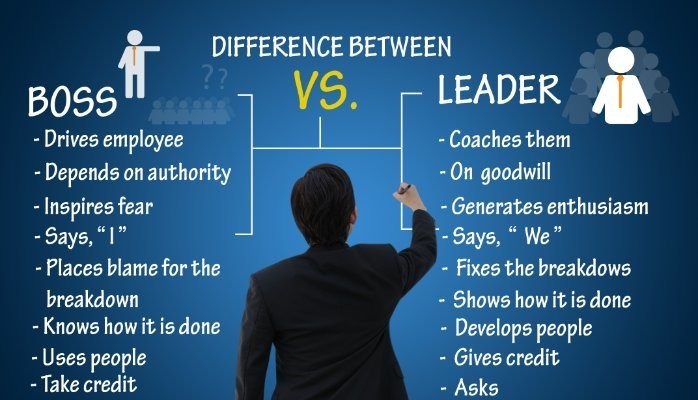I’ve worked for many bosses but few leaders. Working under a bad boss can make a good job even in the best company, unbearable. As the saying goes, people don’t leave bad jobs, they leave bad bosses.
Here are the 4 types of bad bosses that make employees want to quit companies:
1) “Marionette” – In an age of uncertainty, many managers are yielding to this trap of just playing it safe to preserve their position and privileges. They just follow orders. They are mere puppets and exude no loyalty to employees. It’s demotivating working for a manager who does not stand up for their team. If you make a mistake they quickly turn into judge , jury and executioner. It’s hard to feel passion for a job when you experience this.
2) “King Kong” – Some bosses when they reach to the top immediately forget where they came from. These type of managers possess a superiority complex and like to draw the distinction between management and staff. It is dreadful to work under a manager who is more worried about pushing their weight around than building relationships. Great leaders don’t talk down to their employees. They treat everyone with respect.
3) “Superman” – They think the organization revolves around them. Some start behaving like they are the owners of the company. This trap includes making all of the decisions solo, ignoring feedback you don’t like and taking the credit.” Letting your ego get ahead of you and thinking you know it all is a sure path to failure. Showing some humility and vulnerability allows you to strengthen relations with your team.
4) “Taskmaster” – Their sole focus is on the bottom-line. They use the carrot and stick approach to motivation which clearly doesn’t work. Continuously drilling employees is a sure way make them unhappy at work. Micromanagement suffocates, demoralizes and kills creativity. These managers get so caught up in the bottom line that they forget to treat people with dignity and respect. Very few bosses show empathy towards their team members and this helps improve overall morale and performance.
” An employee’s motivation is a direct result of the sum of interactions with his or her manager.” – Bob Nelson
Then there is the LEADER. A leader coaches, supports and inspires. He/she puts the interests of their team before their own. Leaders develop safe atmospheres where risk-taking and feedback is welcomed. They take care of their team. The focus is to help everyone around them succeed. They push their team to grow and become their very best. A leader never leaves any of his team members to hang out dry. When a leader is at the helm, employees feel valued and appreciated. The corporate world is littered with managers but lacks leaders. Employees long for managers who are leaders.
Lauralee emailed me this: “I worked for a company in Brussels a few years ago when my brother had cancer. In that year, I had 10 weeks leave visiting him and then, when he died, attending his funeral). When I asked my manager, Eric how I could repay the company for all these extra holidays, he simply replied “they weren’t holidays, don’t worry about it”. To this day, Eric was the best manager I ever had… I would walk over hot coals for him!”
Bad bosses cost the world economy an estimated $360 billion in productivity.
Employee engagement is at an all-time low (32%). Usually when an employee has an issue with their company, it has to do with something regarding their manager. Companies need to take a closer look at their managers and their leadership style. Employee engagement is more of a manager issue. 75% of American workers say their boss is the worst and most stressful part of their jobs. How bad are they? Bad enough for 65% of respondents to say they’d rather have a new boss over a pay raise. Can a manager become a leader? Yes, it’s possible. Sometimes it just takes being human and developing your people skills. Technical skills alone do not keep employees motivated. In this Artificial Intelligence economy, the new smart is not determined by IQ but by EQ. It’s about listening, relating, collaborating and connecting with your team. This takes humility, authenticity and empathy.
Studies have shown that leading with vision, inspiration, and purpose, produces better bottom-line results as well as happier, more engaged employees. If we want employees to feel commitment to the organization; we need to show we respect and value them. The “human touch” makes all the difference. If you want to make a lasting positive impact – Don’t be a boss, be a leader!




